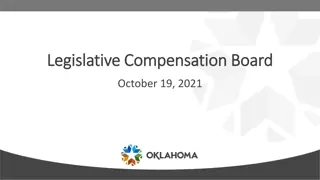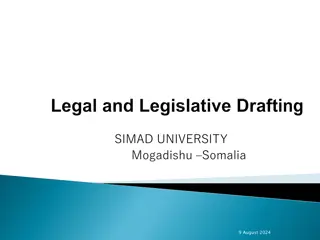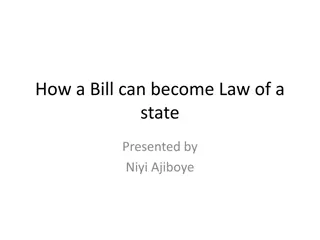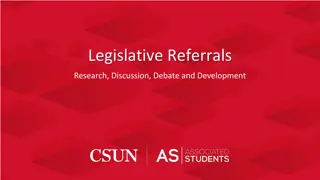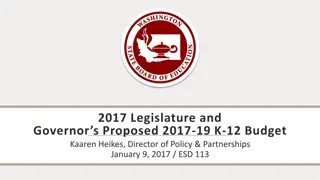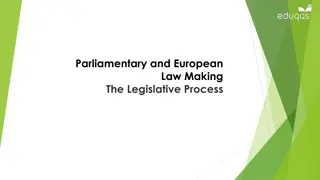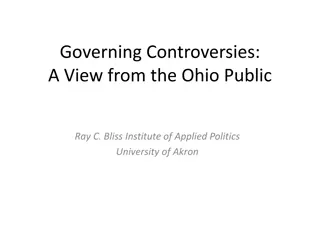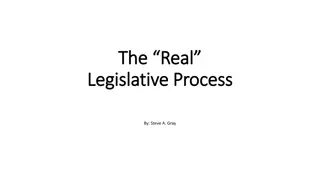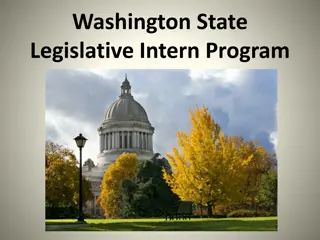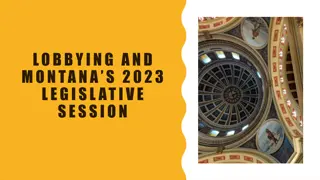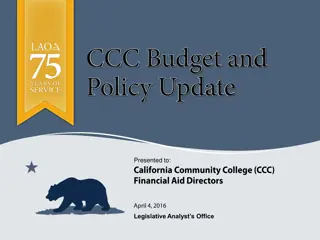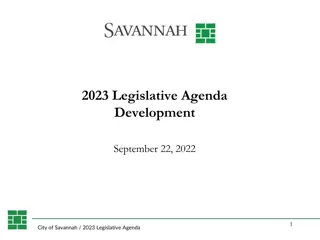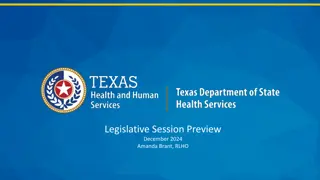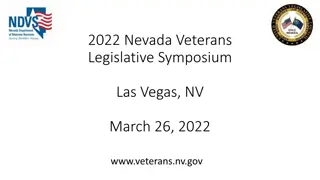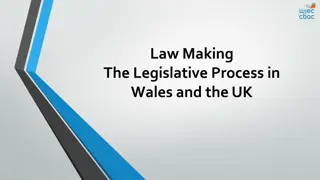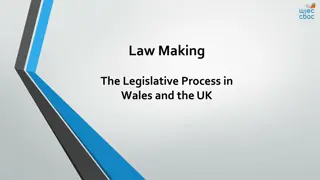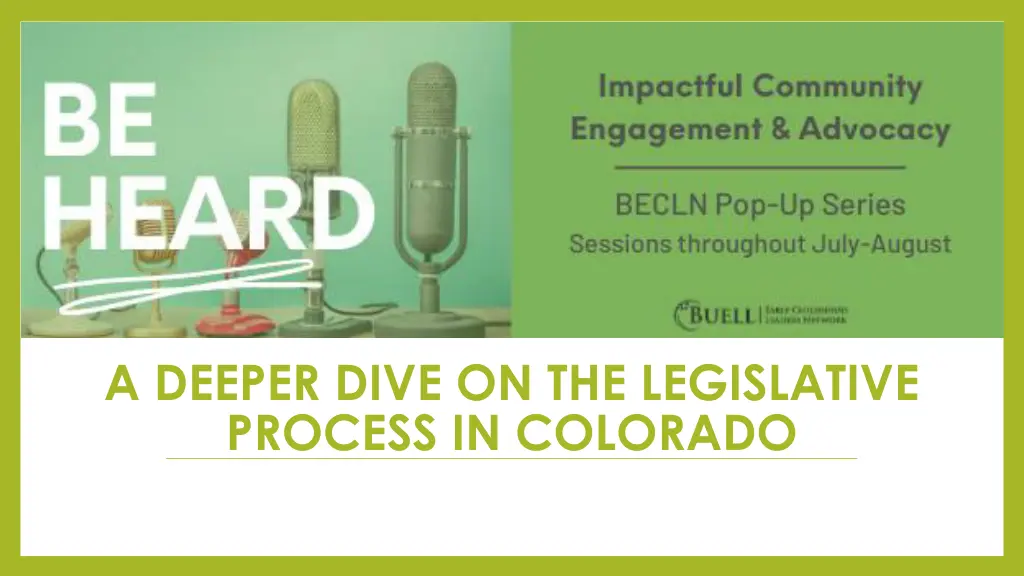
Legislative Process in Colorado: A Comprehensive Guide
Explore the legislative process in Colorado, from the inception of bill ideas to becoming law. Learn about where bill ideas originate from, the steps involved in the legislative process, and how you can engage with lawmakers at various stages. Discover how bills progress through committees, hearings, and floor votes, shaping the laws that impact the state. Gain insights into how you can participate in the democratic process and make your voice heard in shaping policies that matter to you.
Download Presentation

Please find below an Image/Link to download the presentation.
The content on the website is provided AS IS for your information and personal use only. It may not be sold, licensed, or shared on other websites without obtaining consent from the author. If you encounter any issues during the download, it is possible that the publisher has removed the file from their server.
You are allowed to download the files provided on this website for personal or commercial use, subject to the condition that they are used lawfully. All files are the property of their respective owners.
The content on the website is provided AS IS for your information and personal use only. It may not be sold, licensed, or shared on other websites without obtaining consent from the author.
E N D
Presentation Transcript
A DEEPER DIVE ON THE LEGISLATIVE PROCESS IN COLORADO
Some common places bill ideas come from are The policymaker and their staff A state department request A constituent idea or request An interim legislative committee (legislative committee on a special subject that meets when the legislature is not in session) Public awareness campaigns like petitions, protests, and grassroots lobbying Formal lobbying by a business or organization
HOW A BILL BECOME A LAW IN COLORADO
What happens: Before legislative session and in the early weeks of session, legislators work on bill concepts with other policymakers, constituents, and partner organizations. Step One: Bill Concept What you can do: Reach out to your representative with any bill ideas you have or to offer yourself as a general resource on your area of expertise.
What happens: The bill title is read in the chamber of origin, either the House of Representatives or the Senate, and assigned by the leader of that chamber, either the Speaker of the House or Senate President, to its first committee. Step Two: First Reading What you can do: Follow the bill s progress here: https://leg.colorado.gov/bills. This site will have up to date information on the current bill language and sponsors, what committee it s been assigned to and when the hearing will be, and any recorded votes and amendments.
What happens: During a committee hearing, the bill sponsor will present their bill and any testimony they have arranged. Members of the public may also sign up to testify for or against the bill. The members of that committee will discuss the bill and any changes or amendments they would like to make. Step Three: Committee Hearing What you can do: Attend the committee hearing and testify if you re comfortable. Members of the public can share their expertise and opinions on a bill at committee hearings, so this is a great time to make your voice heard! You can even submit a written testimony if you can t attend in person.
What happens: Once a bill passes out of committee, it is heard for second reading by the whole chamber which is called a floor hearing . This is the longer of the two floor hearings where legislators debate the bill at length and propose additional amendments. A voice vote is taken at second reading. Step Four: Second Reading What you can do: Reach out to your representative and other policymakers encouraging them to vote for the bill (or vote against it if the bill would negatively impact you). Note that if you work for a government agency or non-profit there are restrictions on your advocacy and lobbying actions.
What happens: Typically the shorter of the two floor hearings, this hearing is the final opportunity for the bill sponsor to advocate for their bill and for other legislators to make their opinions on the bill heard. A formal vote on the bill is recorded. Step Five: Third Reading What you can do: Again, this is a great time to reach out to your representatives and the other legislators to encourage them to vote in favor of the bill. Set meetings with your legislators, reach out by phone or email, or encourage legislators to vote for the bill via social media.
What happens: Once a bill is passed out of its first chamber, it goes to the other chamber and goes through Step 2 Step 5. Step Six: Second Chamber What you can do: Same drill!
What happens: If the two chambers pass different versions of the bills due to amendments, a small committee of several members from each chamber and the bill sponsors will meet to reconcile the differences and decide upon a final version of the bill. Step Seven: Conference Committee
What happens: Unless the governor decides to veto a bill, a formal bill signing will be scheduled. These signings can be big or small, at the Capitol or at a location significant to the bill and its advocates. Step Eight: Bill Signing What you can do: Attend the signing to show your support! Offer to host the bill signing if the bill relates to the work done at your organization Congratulate the bill sponsors through calling, email, or over social media
Beyond the legislative process, changes to public policy can be made: By an executive order (President, governors, mayors) Through judicial action (Federal, state and local courts) Through rules and regulations (Federal, state and local departments and agencies)
LAUREN FREEMIRE LAUREN.FREEMIRE@GMAIL.COM 303-829-4469



